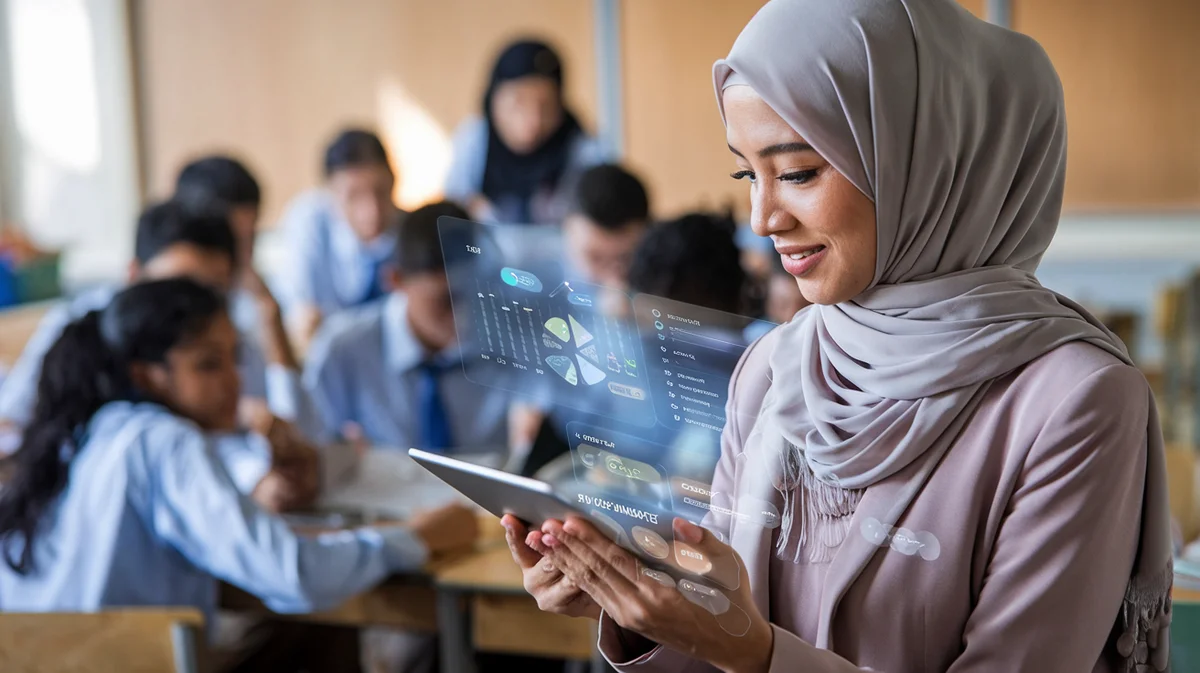Government Programs in Inclusive Education Funding


wp:paragraph
Inclusive education is not just a policy aspiration — it is a fundamental right and a proven driver of social and economic progress. As we at UNOWA continue to empower institutions, educators, and students with innovative, adaptable solutions, we recognize the critical role that government programs and inclusive education funding play in shaping equitable, future-ready learning environments. Here, we explore the landscape of government-led inclusive education initiatives across the EU, MENA, and CIS regions, highlighting key facts, challenges, and proven strategies for large-scale impact.
/wp:paragraph
wp:heading {"level":2}
The Global Imperative for Inclusive Education
/wp:heading
wp:paragraph
International frameworks such as the United Nations Sustainable Development Goal 4 (SDG 4), UNESCO guidelines, and World Bank recommendations have established inclusive education as a global priority. These frameworks call for equitable, inclusive, and lifelong learning opportunities for all, regardless of ability, background, or circumstance. Governments worldwide are responding with policies, funding mechanisms, and reform programs designed to make inclusive education a reality.
/wp:paragraph
wp:heading {"level":3}
Key Facts and Statistics
/wp:heading
wp:list
- The European Agency Statistics on Inclusive Education (EASIE) reports a steady increase in the number of children with special educational needs (SEN) accessing mainstream classrooms across Europe.
- According to the 2023 Eurydice report, most EU countries have national policies promoting diversity and inclusion, but implementation and funding levels vary significantly.
- In the MENA and CIS regions, national strategies and pilot programs are expanding access to inclusive education, often with support from international donors and organizations.
/wp:list
wp:heading {"level":2}
Inclusive Education Funding: The Cornerstone of Progress
/wp:heading
wp:paragraph
Sustainable, targeted funding is the backbone of successful inclusive education programs. Across regions, governments are investing in:
/wp:paragraph
wp:list
- Support staff (special educators, aides, therapists)
- Teacher training and professional development
- Accessible infrastructure and assistive technologies
- Curriculum adaptation and inclusive learning materials
/wp:list
wp:paragraph
However, funding challenges persist. In many countries, inclusive education is financed through general education budgets, leading to competition for resources and inconsistent support. Dedicated funding streams, as seen in Estonia and Lithuania, have proven effective in scaling inclusive practices.
/wp:paragraph
wp:heading {"level":3}
EU: Diverse Approaches, Shared Challenges
/wp:heading
wp:heading {"level":4}
Policy and Implementation
/wp:heading
wp:paragraph
All EU member states have adopted policies supporting inclusive education, yet the degree of implementation and funding varies:
/wp:paragraph
wp:list
- Malta stands out for its comprehensive policy framework and robust teacher support systems.
- Estonia and Lithuania have implemented targeted funding and advanced data collection to monitor progress.
- Poland, Latvia, Bulgaria, and Serbia are strengthening teacher training and support staff recruitment, but often face budgetary constraints.
/wp:list
wp:heading {"level":4}
Key Challenges
/wp:heading
wp:list
- Teacher Preparedness: A majority of European teachers report feeling unprepared for inclusive classrooms, underscoring the need for ongoing professional development.
- Intersectionality: Most policies focus on single groups (e.g., students with disabilities), while intersectional approaches — addressing overlapping disadvantages — remain limited.
- Workforce Diversity: Only eight European systems have policies to recruit teachers from diverse backgrounds, such as those with disabilities or migrant experience.
/wp:list
wp:heading {"level":4}
Best Practices
/wp:heading
wp:list
- Targeted funding for support staff and resources
- Intersectional policy development to address multiple forms of disadvantage
- Recruitment initiatives for a more diverse teaching workforce
/wp:list
wp:paragraph
For more on EU policy frameworks, visit the European Agency for Special Needs and Inclusive Education.
/wp:paragraph
wp:heading {"level":3}
MENA: Ambitious Reforms and Strategic Investments
/wp:heading
wp:heading {"level":4}
National Strategies
/wp:heading
wp:paragraph
Countries like Saudi Arabia, UAE, Qatar, and Oman have launched ambitious national strategies to integrate inclusive education principles into mainstream schools. The UAE’s “School for All” initiative is a notable example, focusing on infrastructure, teacher training, and community engagement.
/wp:paragraph
wp:heading {"level":4}
Funding and Support
/wp:heading
wp:paragraph
Significant investments are being made in:
/wp:paragraph
wp:list
- Assistive technologies and accessible learning environments
- Specialized teacher training and recruitment
- Awareness campaigns to address cultural attitudes and stigma
/wp:list
wp:heading {"level":4}
Persistent Challenges
/wp:heading
wp:list
- Rural and remote access: Infrastructure and specialist availability lag behind urban centers.
- Data collection: Limited data hampers effective policy targeting and evaluation.
- Cultural attitudes: Societal stigma remains a barrier to full inclusion.
/wp:list
wp:paragraph
For a regional perspective, see UNESCO’s MENA education initiatives.
/wp:paragraph
wp:heading {"level":3}
CIS: Aligning with International Standards
/wp:heading
wp:heading {"level":4}
Policy Development
/wp:heading
wp:paragraph
CIS countries such as Kazakhstan, Uzbekistan, Armenia, Moldova, Azerbaijan, Kyrgyzstan, and Georgia are actively aligning their education systems with international inclusive education standards. This often involves:
/wp:paragraph
wp:list
- Updating national education laws to reflect inclusive principles
- Piloting inclusive education models with support from UNESCO and the World Bank
- Gradually increasing national budget allocations for inclusive education
/wp:list
wp:heading {"level":4}
Funding and Implementation
/wp:heading
wp:list
- Reliance on international donors and pilot projects is common, but national investment is growing.
- Teacher training and infrastructure upgrades are top funding priorities.
- Societal stigma and limited professional expertise remain significant hurdles.
/wp:list
wp:paragraph
For more on CIS education reforms, visit the World Bank’s education projects.
/wp:paragraph
wp:heading {"level":2}
Expert Insights and Professional Advice
/wp:heading
wp:quote
“Education systems in Europe are increasingly diverse. They strive to include all the various needs of their students, from different abilities to different languages, socio-economic backgrounds, ethnicities, genders, etc. While some needs are addressed more than others... the intersectional approach is largely missing in European education.” — Eurydice, 2023
/wp:quote
wp:paragraph
Professional advice for ministries and education leaders:
/wp:paragraph
wp:list
- Invest in comprehensive teacher training on inclusive practices and differentiated instruction.
- Ensure sustainable, dedicated funding for support staff, accessible infrastructure, and assistive technologies.
- Develop intersectional policies that address multiple forms of disadvantage simultaneously.
- Foster recruitment policies to diversify the teaching workforce and reflect the communities served.
/wp:list
wp:heading {"level":2}
Regulations, Policies, and Government Guidelines
/wp:heading
wp:list
- EU: National policies are guided by the European Commission’s strategic objectives and the implementation of SDG 4. See the European Commission’s education policy.
- MENA and CIS: National education laws are being updated to reflect inclusive education principles, often referencing UNESCO and World Bank frameworks.
/wp:list
wp:heading {"level":2}
Recent News and Reforms
/wp:heading
wp:list
- The 2023 Eurydice report highlights ongoing reforms across Europe, with new initiatives to promote diversity and inclusion in schools.
- MENA and CIS countries are piloting inclusive education models, with support from international organizations and increased national funding.
/wp:list
wp:heading {"level":2}
Case Studies: Success in Action
/wp:heading
wp:list
- Malta: Comprehensive policy frameworks and strong teacher support have made Malta a leader in inclusive education within the EU.
- Estonia and Lithuania: Targeted funding and robust data collection systems drive continuous improvement.
- UAE: The “School for All” initiative demonstrates the impact of strategic investment in inclusive infrastructure and teacher training.
/wp:list
wp:heading {"level":2}
Best Practices for Effective Inclusive Education Programs
/wp:heading
wp:list
- Regular data collection and monitoring of inclusive education outcomes
- Targeted funding for support staff, assistive technologies, and teacher training
- Inclusive curriculum development and accessible learning materials
- Community engagement to address stigma and promote acceptance
/wp:list
wp:heading {"level":2}
How We Empower Inclusive Education
/wp:heading
wp:paragraph
At UNOWA, we design and deliver complete educational systems — such as our MIKKO inclusive education solution — tailored to national standards and ready for large-scale impact. Our approach includes:
/wp:paragraph
wp:list
- Curriculum-aligned content for mainstream and special education
- Comprehensive teacher training and professional development
- Analytics and monitoring tools for data-driven decision-making
- Locally adaptable solutions to meet the needs of diverse learners
/wp:list
wp:paragraph
We believe every child deserves access to quality education, regardless of their abilities. With over 15 years of experience and a proven track record in over 300 national projects, we are committed to transforming learning experiences for the better.
/wp:paragraph
wp:heading {"level":2}
FAQ: Government Programs in Inclusive Education
/wp:heading
wp:paragraph
What is inclusive education funding? Inclusive education funding refers to dedicated financial resources allocated by governments to support the integration of all learners — including those with disabilities, SEN, or from disadvantaged backgrounds — into mainstream education settings.
/wp:paragraph
wp:paragraph
Why is teacher training important for inclusive education? Effective inclusive education relies on teachers who are trained to address diverse learning needs, adapt instruction, and foster supportive classroom environments.
/wp:paragraph
wp:paragraph
How do international organizations support inclusive education? Organizations like UNESCO and the World Bank provide technical guidance, funding, and policy advice to help countries develop and implement inclusive education programs.
/wp:paragraph
wp:paragraph
What are the main challenges in implementing inclusive education? Key challenges include insufficient funding, lack of teacher preparedness, societal stigma, and limited data collection for monitoring progress.
/wp:paragraph
wp:paragraph
Where can I learn more about inclusive education policies? Explore resources from the European Agency for Special Needs and Inclusive Education, UNESCO, and World Bank.
/wp:paragraph
wp:paragraph
Let’s work together to transform learning experiences for the better. Discover how UNOWA can help your institution lead the way in inclusive, future-ready education.
/wp:paragraph








